Computer Generated Images: The Utilization in Hollywood Films
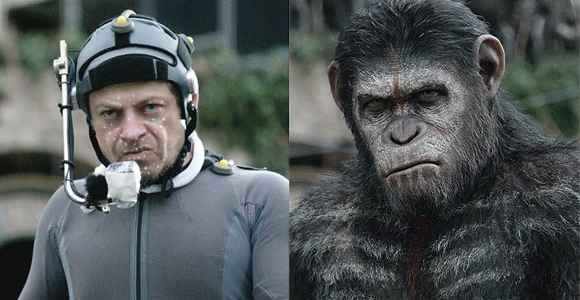
The further and further the film industry grows, the more and more people start to see that Hollywood films are starting to loose their creativeness, when compared to older films. Whether it is spitting out unnecessary remakes and sequels, or rehashing old ideas already seen millions of times; audiences always have new ways of pointing out the chinks in Hollywood’s rusty armor. One complaint constantly stated by many audience members is the over usage of computer generated images (CGI). People will say how much they are tired to death of the same old CGI popping up in every blockbuster now-a-days. The Transformers film and the Star Wars prequels are usually the easy targets when people are trying to show CGI at it worst; not just in quality, but in its usage.
On one hand it is very true that practical effects should be utilized more in films, just mix it up once in a while. On the other hand, it seems like audiences do not like giving credit where credit is due, when regarding CGI. People hate CGI because it is symbolizes what is wrong with Hollywood, which is a bit exaggerated. Villainizing CGI only does disservice to the great examples of CGI in films like in Terminator 2: Judgement Day and the Lord of the Rings trilogy. Practical effects are great and really do bring imaginary creatures to life, but there is only so much you can do with it. Film is an evolving art form, and the way films are made needs to evolve with it. Keep in mind, this article is not trying to kiss the feet of movie studies everywhere, nor is it trying to only take the side of the audience. This article is only trying to show there can be a middle ground between CGI and visual immersion. With no further ado, it is time to play devil’s advocate and to explain why CGI is necessary in the film industry.
Practical Effects
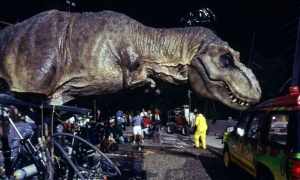
Before we understand why CGI is necessary in the film industry, it is important to understand why everyone loves hand made effects.To say that practical effects have brought to life unbelievable creatures is an understatement. A practical effect can be described as any effect that is not computer made. For example: animatronics where constantly utilized in sci-fi and horror films like Jaws, and in the Star Wars original trilogy. The only down side that came animatronics is that that that would malfunction a lot of the time, which seriously effected the films budget. Make up and costumes was also a useful tool in sci-fi and horror, and even though the costumes or make up were uncomfortable for the actors, it only proved how devoted they were to the role when they stuck with it.Great practical effects do admittedly give an undeniable realism that sometimes even CGI cannot perfectly capture; that does not mean it is necessarily better than CGI, it just simply has advantages.
A great example of an effect artist would be Tom Savini, who worked on the classic Dawn of the Dead, and From Dust Till Dawn. Another fantastic effect artist would be H.R. Giger, who is synonymous with creating the look of the necromorph for the film Alien. Practical effects may bring creatures and setting to life, but there are some things that even practical effects can’t do. A good example is the T-1000 in Terminator 2, which was one of the best effects at the time because it was so unique. True, there was once and a while a usage of practical effects, but for the most part, the effects were better suited for CGI because of all the transformation and shapeshifting that is being depicted. Now-a-days, we get films that we could have never of dreamed of before.
Let’s put this in to perspective: say Paramount studios made The Avengers with only practical effects and hand made sets. While the story would have stayed the same, the visual presentation would not be the same because they no longer have all those awesome and memorable action scenes. There would be no more Iron Man flying into the stomach of an alien beast, no more Hulk destroying alien hordes left and right, and no more puny god scene. Apologies if this sound like a movie executive talking, but it would be financially impossible to make The Avengers using only practical effects. Practical effects are expensive, and CGI should not be seen as a cheaper way of making films, but instead as just a simple way to enhance the experience. While The Avengers does use make-up and hand made sets, they simply use the CGI when it is absolutely necessary. That is the most important factor when judging a film on special effects.
Everyone remembers how amazing Jurassic Park was with its mind-blowing practical effects for the T-rex and Raptors. When Jurassic Park uses CGI it is only for the effects that were too hard to portray with practical effects. What audiences really want is at least a good balance of practical effects and CGI in a film, and not just one or the other. It is very apparent that there are films now-a-days that overuse CGI, even though there were some instances they could have used practical effects. Practical effects are not dying out, but Hollywood should to a better job to make sure in is utilized more often.
Stop Motion
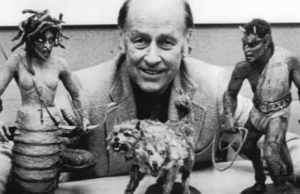
One of the best examples of hand made effects is stop motion. This is a long but worthwhile technique, in which a clay figure is shot every second, to create a feeling of movement. This was popularized in the classic King Kong, and was mind blowing at the time because it was a whole new way to create movement for bigger creatures. The undisputed king of stop motion was Ray Harryhausen, who made the creature effects for The Beast from 20,00 Fathoms, Jason and the Argonauts, and Clash of the Titans. He was a master of his craft, and his craft will always be synonymous with film history. Other films took inspiration from Harryhausen, like The Terminator and Robocop. Even though using stop motion in live action films is practically extinct, it still lives on in Animation, like in Wallace and Gromit and The Nightmare Before Christmas.
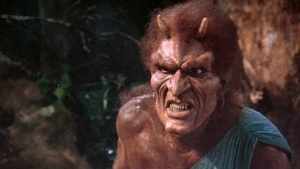
Back to the topic of computer effects, one of the common complaints about CGI is how people can tell when it is being displayed on screen; it is clear when a monster, or setting is made of CGI. While that is an understandable point, it is a flawed argument when the same thing could be said for stop motion. Stop motion is still amazing and fascinating to look at, but there is always the sense that the creature are not really there, and are just very detailed clay figures. People say it is distracting when a character switches from the real actor, to a CGI model; the same could be said for stop motion. Take Clash of the Titans for example: The character Calibos is in one second a guy in make up, and the next second he is a stop motion figure. That is very distracting, and in a sense kills the immersion of the character. This is not trying to say stop motion is bad, which it absolutely is not the case. It is only perplexing that CGI is criticized for being clearly seen on film, while stop motion in not. Some may see it as unfair to compare CGI to stop motion because stop motion has not been used for many years, and has not aged as well. However, the point is not to say which one is better than the other, but how they are more similar than one may think. One is simply hand made with clay, while the other is made with computers. To further establish this point, the animation studio Laika has used both stop motion and computer effects to make their films like Coraline and Paranorman. Lets not think of them as two completely different special effects.
Good Examples of CGI
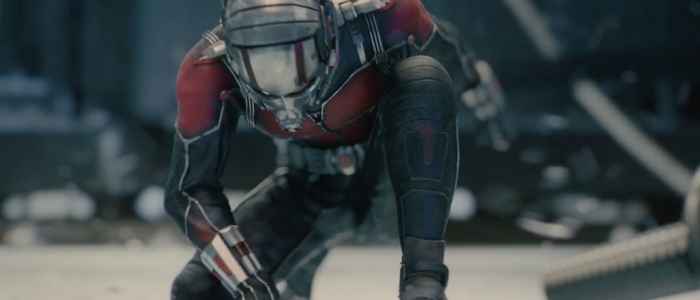
Now that we have tipped our hats to stop motion and practical effects, let talk primely about the benefits of CGI. Computer generated effects give the audience a new kind of flow when it comes to movement for character; whether it is fast movement, or a scene shot in slow-motion. When done right, action scenes become fast paced, while at the same time giving clear details so the audience can make out who is who. Pulling another example from the Marvel Cinematic Universe: the recent Ant-Man trailer already gives us a whole new way of filming comic book styled fights, by showing rapid action seen from the perspective from our ant sized hero. Audiences have seen movies from small sized characters’ perspective like in Honey, I Shrunk The Kids, but not to this extent. The best examples of good quality CGI isn’t when it is only there to show of all the good effects, but when it is helping to enhance the story itself. In other words, a film can work on its own with a good story, but the CGI gives it a distinct look, even an inventive artistic style. A popular film people will instantly think of when it comes to distinctive CGI is Sin City. A film that is almost all made with CGI, but does not come off as fake because the whole world is in the style of a black and white comic book, with a few reds and yellows to offer a unique artistic look.
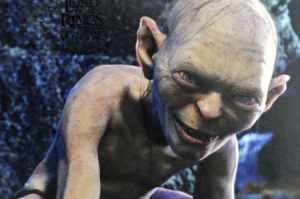
Of course, CGI can lose the immersion of the character if their facial features don’t look convincing. Luckily, CGI has giving new wave of capturing facial features and distinctive movement with motion capture. It is when an actor gets in digital suit, performs the action for their character, and then animators match up the actors actions with the digitally made character they are portraying. More often than not, motion captured performances pay off beautifully in the end because the audience can believe that CGI character is really there. Once again, the Marvel movies gives us a great motion capture performance in Guardians of the Galaxy with the character Rocket, acted out by James Gunn’s brother, Sean Gunn. Yet, the undisputed master of motion capture is Andy Serkis, who blew everyone away with his eerie, yet sad portal of Gollum from the Lord of the Rings movies. Even since, he has show why he is the master, when in other films like King Kong (2005), Rise/Dawn of the Planet of the Apes, and The Adventures of TinTin. There is a reason people are practically begging on their knees for Serkis to get an Oscar.
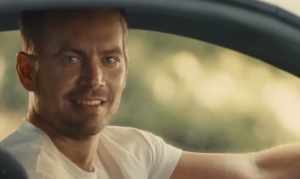
CGI is one of the best ways to portray something, or someone that is not really there. Because of that, CGI has become an immensely helpful tool when portraying actors who are sadly no longer with us. If an actor died during the time they are making a film, they can CGI the actor so their character can still be in the film. Some will say it would be better to leave the character out for the rest of the film, but that would just be disrespectful to the actor him/herself. An actor would want to see out their character to the very end, and CGI has given them that opportunity. A famous example is Brandon Lee in The Crow, in which he died on set, and since they were almost done, they simple placed a digital head of Lee on a body double to finish the rest of the scenes. The CGI team was on the top of their game when making the CGI head because even to this day, it is hard to tell when Brandon Lee is on the screen, and when he is not. The most resent example of this is a CGI Paul Walker in Fast and Furious 7. He died unexpectedly during the shooting of the film, and along with the help of his brothers who bare a striking resemblance to him, his character was able to have a good send off in the end of the film. Examples like these and others prove why CGI benefits Hollywood filmmaking.
Bad Examples of CGI

If anyone just got bad shivers down their spines by simply looking at the picture of Jar Jar, there is a good reason why. While CGI grants movie makers many benefit in their film, other films give the CGI art-form a bad name. When audiences say that their sick of CGI, what they really mean is they are sick of bad, or at least poor looking CGI in films. One of the prime examples of bad CGI is in the rightfully hated Star Wars prequels. While the CGI got a little bit better in Episodes II and III, The whole trilogy gave us awkward looking and simply childish alien designs. This is a prime example of films that easily could have used practical effects, and yet, the films heavily overuse their CGI instead. It was a big disservice because the original trilogy proved that you can use practical effects to give the audience bizarre, yet endearing alien creatures. Special effects don’t necessarily kill a film, but if the effects are bad, then a film itself will be solely judged on it merits alone, and not on the presentation. Remember, a film can be fine on its own without having good effects, but well crafted CGI can help a film to make it even better. In the Prequels case, because the CGI is so bad and fake looking, it reveals just how bad the films really are; bad effects + bad story= a waste of the audiences time. In this case, yes, special effects do kill a film.
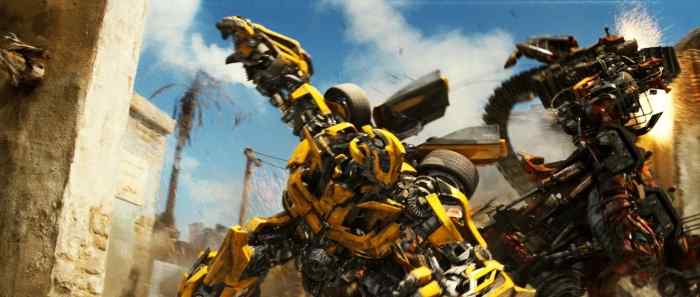
Another case of bad CGI in a film can be seen in the live action Transformers franchise, with effects that are not necessarily bad, but just disorienting. The action is not the worst thing about this franchise when compared to the blatant female eye-candy, offensive racial stereotypes, and over appraisal of the American military. Yet the action is often the most complained about thing in the films because they are so rapid and too hard to follow. One reason is that all the Transformers look mashed together with different robotic parts, therefore making it hard to get a clear picture what they look like. Another example is that all the Autobots have different colors, but the Decepticons hare grey, making them basically indistinguishable. The biggest reason the action does not work is because the camera is always moving. As a result, there is no time for the audience to breath and to take in what is going on around them because the action scenes just becomes relentless after a while. It is true that bad CGI like this is plaguing Hollywood films, but at the same time, they only make good examples of CGI look even better.
Out of the many augments made for CGI as a useful tool discussed in this article, a lot of film fans would agree that these examples are fair statements. However, there is still a bad taste that lingers in film fans mouths whenever CGI is discussed. That is the assumption that CGI has no heart to it, when compared to practical effects and stop motion. The fact that CGI is not built with the hands of the creator themselves automatically makes it a primitive art-form. Really? Granted it takes a person with a special touch to make stunning examples of practical effects, but that does not mean CGI is inferior in comparison. Do people think CGI fails in comparison because it is made on a computer? It is not like they yank any random person off the street and tell them to make computer effects. The best examples of CGI are made by professionals; men and women who do put their heart and souls in to their work because it is what they love to do. It can take weeks, even months to get a simple effect right. Film fans are possibly trying to dislike CGI because it embodies the constant involvement of technology, and how it taking over our society. They feel that CGI will take over the film industry completely, and practical effects will disappear along with it, but that will most likely never happen. It is true that practical effects are not as popular as the used to be, but that is because CGI came along to help with what practical effects could not do; not to replace practical effects, but to simply work along side it. There are plenty of examples of directors like Christopher Nolan, who are adamant about using practical effects, so there is no sign of the art-form going away any time soon.
What I hope readers take away from this article is that CGI should not be seen as a slack-jawed way of making effects. It is perfectly fine to judge a film with questionable CGI, but simply remember to judge it as an art-form should be judged. It should not be judged by the art-form itself, but instead by the artist themselves.
What do you think? Leave a comment.











You’re right that CGI isn’t inherently bad just as practical effects aren’t inherently good. But I think there are two basic underlying problems driving the CGI argument. The first is quite simply cliché: that the use of CGI has led to not only a homogenisation of style but also to the dominance of certain kinds of narratives, namely spectacle driven action films. Similar complaints have been made about other technological innovations. It was feared that sound was turning film into canned theatre when the technology was first introduced.
The issue with CGI, however, is that it plays into a long standing argument against the dominance of spectacle in popular film. Because it puts neither actors nor crew in danger, CGI allows directors to up the ante and make increasingly bombastic action sequences. When those sequence seem to start appearing for their own sake, when they’re not well integrated into a narrative as you suggested, than it makes the argument against CGI easier to make because it also becomes an argument against the denigration of narrative.
The other (which you hinted at) is the problem of balance. While some traditional animators still take issue with it and claim it’s killing cinema, very little of the CGI argument is directed at fully CGI animated films. This is likely because there is both no point of contrast, no live-action shots to compare the CGI with, and a certain tolerance for a higher level of unreality than in a live action film which might use CGI to do have its characters do something patently impossible. There is a jarring effect of sudden unreality.
A character than is CGI throughout a film is easier to accept than one that begins as live action, but then becomes CGI. The same could be said of practical effects of course. I remember being really annoyed by the end of The Fly because the climax replaced the main character with an animatronic. It was necessary for the narrative action, but jarring because I was suddenly faced with something that was patently not real.
But my problem with The Fly was specific to that film alone and I think it’s important to similarly make the argument for or against CGI on a film to film basis rather than as a blanket denigration.
Wow. You sure do have a passion for effects in film. I wrote this article because I was sort of tired of people saying CGI is bad, When it is actually beneficial to the film industry. It is true that it is overused, but that does not make it bad. I glad to see you understood that 🙂
I’m not an effects aficionado but any means. I’m just really interested in how CGI gets folded into other arguments about the state of popular cinema.
Kristin Thompson also recently addressed the issue. It might be worth a look. http://www.davidbordwell.net/blog/2015/05/24/the-waning-thrills-of-cgi/
Interesting article especially because Hollywood is definitely banking on the usage of digital images for most their films.
I can’t deny that
They certainly are banking in, but at a huge creative cost. By this I mean such films come across as a special effects bonanza to gain profits. No wonder I hate the majority of new releases these days.
My most hated CGI moment is early on in Titanic when we see, from the air, a horrendously rendered officer walking on deck. Looks for all the world like a Playmobil man.
I take it you watched Return of The Jedi on telly. I too felt disgusted at how bad the Cgi additions were. That bit where Jabbas band play an awful new song was embarrassing, words can’t describe how bad it looked and how out of place it seemed.
The special editions of the Star Wars trilogy is a topic in it of itself.
I read somewhere that even the Wachowskis – enthusiastic employers of CGI – were trying to do as much as literally possible on their latest film. However, for all of its numerous drawbacks as a film, ‘Argo’ used to some great CGI to geographically go back to the late 70s. That old cliché about ‘less is more’ seems entirely apposite to CGI. If it’s used for background or for small details, it proves its worth. Rubbing out a characters legs in ‘Forrest Gump’ or ‘Rust and Bone’, for example, were both amazingly effective.
You put it perfectly: “less is more”. CGI should mostly be used when it is necessary.
I watched Avatar for the first time recently. Wish I hadn’t. It was like watching someone play a PS3 game for 3 hours.
It was genuinely impressive in the cinema and in 3d.
I think there’ll always be a thrill from watching somebody really do something that’s really difficult – see Buster Keaton, Gene Kelly, the car chase in The French Connection for examples. CGI just doesn’t give you that, particularly when the director succumbs to the temptation to depict the impossible rather than the improbable.
My only measurement is: does it work?
Some films are unfilmable without great CGI like Twister, The Day After Tomorrow, Revenge of the Sith and King Kong, to name some excellent examples.
I admire Nolan as an extraordinary filmmaker and think his preference for real over CGI is to be lauded. However the proof is in the end result. I will see Interstellar this weekend and hope it’s worth my three hours.
Films that surprised me with the amount of CGI included…Zodiac.
Exactly. Great use of CGI, unlike every Transformer film ever.
When it becomes the object of the spectacle, rather than a helpful addition to it, it fails.
Finally, somebody said it. I have thought the same thing about CGI for many years and, ultimately, I believe it has it’s place but the real should be emphasized if we want to use CGI to momentous effect. Another example of CGI being used to poor effect is The Lion, the Witch, and the Wardrobe.
Interesting point with The Lion, The Witch, And The Wardrobe. I curious to what exactly you mean by that? Also, I am glad to have someone than understands my defense for CGI 🙂
As to the Lion, the Witch, and the Wardrobe: It’s been many years since I’ve watched it from beginning to end, but I do recall being seriously disappointed by the glitchiness (perhaps not the best word, but it’ll have to do) of the CGI. It’s particularly noticeable in the fabricated animals, i.e. wolves leaping at Peter, and the verisimilitude of the film feels disjointed as a result. Thinking back on it, it strikes me that you could sort of see an outline of sorts, like a fuzzy area, around the item that they CGId into the film. This is especially true if the CGI is moving rapidly at a run or leaping. I grew up in a forest, so wild animals and their movements are nothing new to me. Oh, the fur moves oddly at times, too.
I’m glad to see someone verify what I have been saying since I was a kid in the 90s. 😉
Aaron, thank you for putting all this information together about CGI.
Thank you Venus. I feel that CGI is getting an unfair hate from people now-a-days, so I thought I would try to offer a more positive outlook.
What a fantastic article. I’m glad you compared CGI to other major effects, which a lot of people forget to do when analyzing and criticizing. I think you’re to say that CGI definitely has its place. I really can’t imagine Avengers without CGI, but there is an allure to practical effects that CGI can’t capture, at least in some instances.
I’m excited to see how Abrams uses a good mixture of both in The Force Awakens.
Thank you. I am really exited for The Force Awakens as well. From what we have seen in the trailers, there will probably be a good mixture of practical effects and CGI
The nature of CGI is that it just gets better and better, which sadly means with hindsight it gets worse and worse. So I can see the wish to rely on it as little as possible so as not to date films too badly. I think it’s pretty admirable that the likes of Christopher Nolan can make these big, ridiculous blockbusters without a multitude of CGI-trickery.
For me the ‘saddest’ thing about CGI is that it’s the ‘easy’ way out. The most powerful thing in the film maker’s arsenal is the viewers imagination.
CGI simply doesn’t look as real. Jackson is particularly guilty of using it to such a degree it breaks the reality of the story. The best effects in the LotR movies are all the result of filming miniatures.
In LoTR and the Hobbit movies they used cg to break the laws of physics which you can’t do when filming miniatures. CGI as a whole is the product of many parts.
I think there’s a lot you can admire about properly done movie stunts in terms of their technical brilliance, and the element of risk and requirement for patience and endurance to get everything working and the shot right certainly adds to this. It’s a bit different when it comes to a graphic artists on a Mac touching up a few pixels here and there. Of course, that kind of stuff is also based on a mindspinningly sophisticated technological bedrock, and you can very much admire the artistry of well done CGI.
Viggo Mortensen on the CGI on the Lord of the Rings films:
“…..Peter was always a geek in terms of technology but, once he had the means to do it, and the evolution of the technology really took off, he never looked back. In the first movie, yes, there’s Rivendell, and Mordor, but there’s sort of an organic quality to it, actors acting with each other, and real landscapes; it’s grittier. The second movie already started ballooning, for my taste, and then by the third one, there were a lot of special effects. It was grandiose, and all that, but whatever was subtle, in the first movie, gradually got lost in the second and third. Now with The Hobbit, one and two, it’s like that to the power of 10……..”
While that is a fair point, Viggo Mortensen is well know for talking crap about the Lord of the Rings movies in general, so he is not the best example to be taking reference from.
As any other art form, movies should be judged in terms of the final product as a whole. If music, CGI, actor’s performances, story or any other piece of the puzzle is odd or made without care, then the whole movie fails.
But most of the time audiences want to see something new. And when watching a movie I like to see a new story, a different narrative, or a different perspective. If fCGI is required to that end, welcome. But when special effects are the only interesting part of a movie, then I prefer to go somewhere else.
When I was watching Age of Ultron there was this really well done one take shot that went on for maybe a minute or so, but then I realised that it might all be CGI and it lost all of its credibility for me.
CGI has diminished the levels of imagination and resourcefulness that lent magic to many films.
I think it is more an over reliance upon CGI that some directors have issue with. There films will be filled- probably- with lots of little CGI touches, but not rely upon them for their action center piece.
CGI dates, very badly.
Use CGI to enhance something, but not make it the basis for the entire movie. If it’s badly done or overused it’s really distracting.
A good article overall, however, the multiple spelling and sentence errors made it hard to follow. I also wonder if it wouldn’t be prudent to find a more diverse example, than predominantly Marvel Movies, to show CGI being used properly. I do find the overall argument convincing, and something I’ve considered myself. I think there is a long way to go with CGI, and balances to be struck, but it’s here, it’s now essential, and it’s not going to go anywhere.
As good as CGI is, I still think most of us are conscious of it and it therefore breaks the reality of the film. Look at imdbs top 10 films and see how many are cgi saturated.
The ‘bigger’ the CGI, the more artificial, the more phony-baloney it seems. The more it strains for spectacle, the more unreal it comes over, at least to my eyes. It just ‘feels’ plastic and fake.
I think that your argument that we should judge CGI just as we would judge any other art form is particularly interesting. While an over reliance on CGI is a concern in today’s film industry, I don’t think people would mind it as much if all of the CGI that we saw in films was well-done. Don’t hate CGI as a whole; hate poorly done CGI.
A difference between CGI and other art forms that makes it difficult to judge it in this way, however, is that bad CGI is not a self-contained art. It exists within another art form, the film that it is supposed to enhance. It can be difficult for audiences to separate poorly done CGI from the film as a whole, which is probably why CGI gets such a bad rap…because it degrades the quality of another piece of art as well.
Well said Nicole. The biggest thing of CGI is that it is an illusion, and the audience should put in the back of their heads that what they are seeing is CGI. Of course, if you over due CGI, the obvious it becomes that it is a computer effect.
CGI is a technology. We can do lots of stuff with technology but sometimes it’s not a good idea. I sometimes wonder if wonderful CGI is a way of trying to make up for a poor script/storyline. Sometimes less is more.
Great work!
Thanks man 🙂
As you pointed out early on in the article, it really does depend on the art style of the CGI. Gollum looks good for example because he, along with other CG characters such as the Ents help to give Middle Earth its distinctive look and atmosphere. Not only that, but their character models were clearly polished and given specific details that really define their features. Jar Jar, on the other hand, looks awful because he honestly just looks like a plastic toy somebody started melting in that photo. I feel like too much is going on with him, whereas the former examples were given a clear focus.
Yeah, I do think there should be a right balance of CGI, like your good example of the Lord of the Ring creatures.
I think CGI is pretty cool and does a great job of captivating audiences.
I would say that most of the above comments are justifiable. It’s tough to analyze CGI in films (and especially in Hollywood) simply because of the reasons you listed above. It spans the range of necessary (in the sense that some films couldn’t exist without it) to excessive. I agree that Hollywood has been on the side of excessive CGI for some time now, and I wonder if it has something to do simply with cost. It would make sense that its cheaper to CGI an exploding city as opposed to practically destroying a small town in the boonies. Similarly, some directors stand behind CGI as vigorously as they stand behind the digital vs. film debate. Depending on the pull of a director/producer relationship, they may be able to override a practical budget with the creative choice to use CGI instead. However, whatever the case, it definitely needs to be something that adds to the film is chosen to be used, and is done convincingly and correct, and not something that a child would laugh at in a horror film.
Im glad you motioned the cost of CGI, because I never underwood the idea that just because GCI is cheaper automatically makes it bad. Just because it is cheaper does not mean it’s a cop out, and as a business, they should do want ever they can to make their films more presentable. That why in my article I brought up how Avengers would be finically impossible if they only used practical effects.
CGI is a gift and a curse, it allows the cinematic world to create there visions more easily and more realistic. Viewers are in awe of what is created on the big screen.
The problem is the cost and are beloved classics will only be loved for so long. The original star wars may not be as powerful as it once was; same with King Kong and Godzilla. All have been remade and eventually we will all hear “I like the remake better.” CGI helps bring the fictional world to reality I just hope it doesn’t trump are beloved classics.
I feel no matter how many times a film gets remade with improved effects, most of the time the original will always be seen as classic. No mater how many times someone remakes King Kong, the original will always be seen as the classic, and it will never disappear from film history
“The further and further the film industry grows, the more and more people start to see that Hollywood films are starting to loose their creativeness, when compared to older films.”
While there were of course some bad films in older times, there is a point to be had here. It also has a side effect of incidentally validating Plato’s concerns of making and consuming art.